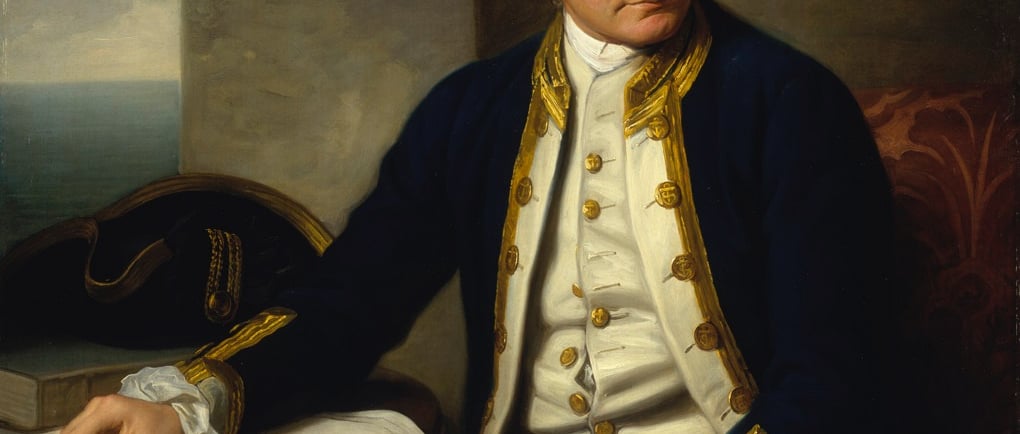James Cook
Captain James Cook, an 18th-century British explorer and navigator, is renowned for his extensive voyages across the Pacific Ocean, significantly contributing to the world's geographical knowledge. He charted numerous territories, including the eastern coast of Australia, New Zealand, and the Hawaiian Islands. Cook's detailed observations and mappings were meticulously documented in his seminal work, *The Journals of Captain James Cook*, which have become invaluable contributions to travel literature. His writings provided profound insights into the peoples, cultures, and landscapes of previously uncharted regions, greatly enhancing European understanding of the wider world during that era.
Borja Vázquez Fontao
6/18/20234 min read


James Cook: The World Through Uncharted Waters
Captain James Cook, one of history’s most intrepid explorers, reshaped the Western world’s understanding of the globe through his voyages in the 18th century. Born in 1728 in Yorkshire, England, Cook’s seafaring life began modestly but soon transformed into a series of grand explorations that would make him a pivotal figure in the Age of Discovery. His journeys, meticulously documented in The Journals of Captain James Cook, reveal not only the places he visited but also the emotions, motivations, challenges, and sometimes even the humor that colored his extraordinary experiences.
Places Visited: Charting the Unknown
James Cook’s voyages took him to some of the most remote and uncharted parts of the world. His first voyage (1768-1771) aboard the HMS Endeavour was aimed at observing the transit of Venus across the sun, but it also led to the first European contact with the eastern coastline of Australia and the detailed charting of New Zealand. His second voyage (1772-1775) on the HMS Resolution sought to find the rumored southern continent, Antarctica, and while he didn’t reach it, Cook’s expedition crossed the Antarctic Circle and mapped much of the South Pacific.
On his third and final voyage (1776-1779), Cook explored the North Pacific, mapping the western coast of North America and searching for the fabled Northwest Passage. It was during this voyage that he discovered the Hawaiian Islands, which he initially named the Sandwich Islands. His extensive and precise charts of these regions became invaluable to future navigators, and his observations on the cultures he encountered provided Europeans with a broader understanding of the world.
Emotions and Motivations: Driven by Discovery
Cook’s motivations for exploration were deeply rooted in a desire for knowledge and discovery. His journals reveal a man who was not just a navigator but also a scientist and an observer of human nature. His writings often convey a sense of wonder at the new lands he encountered, coupled with a deep respect for the indigenous peoples he met.
However, Cook’s writings also expose moments of frustration and weariness, particularly during his third voyage when his health began to decline. The relentless pursuit of new lands and the pressures of leadership took a toll on him. In one poignant entry, Cook wrote about his longing for home, noting the irony that his life’s passion had become both his greatest joy and his most exhausting burden (Cook, The Journals of Captain James Cook, Vol. 3, p. 254).
Challenges and Experiences: The Reality of Exploration
Cook’s journeys were not without significant challenges. The physical hardships of long sea voyages, including scurvy, storms, and the constant threat of shipwreck, were ever-present. On his second voyage, Cook implemented a rigorous diet to prevent scurvy, which included sauerkraut and malt, earning him the respect of his crew for his attention to their health—though not everyone appreciated the taste of the sauerkraut.
Cultural encounters also presented challenges. In New Zealand, Cook had several tense interactions with the Māori, which were sometimes marked by misunderstandings and violence. However, Cook’s diplomatic approach often diffused potentially explosive situations. In one humorous episode, Cook attempted to communicate with a group of Māori by performing a traditional British dance, much to the amusement—and confusion—of the locals (Cook, The Journals of Captain James Cook, Vol. 1, p. 112).
Cook’s final voyage, though, proved the most challenging. In Hawaii, after initially being welcomed as a deity by the islanders, relations soured, leading to Cook’s tragic death in 1779 during a skirmish on the beach. His journals reflect a deepening sense of foreboding in the days leading up to his death, as the explorer, who had always prided himself on his ability to navigate the unknown, found himself increasingly at odds with the world around him (Cook, The Journals of Captain James Cook, Vol. 3, p. 362).
Strange and Funny Anecdotes: The Lighter Side of Exploration
Despite the often-grim realities of exploration, Cook’s journals are peppered with moments of humor and strangeness. One particularly odd episode occurred during his time in Tahiti, where the locals insisted on trading their pigs for nails. Cook’s crew, desperate for fresh meat, began dismantling parts of the ship to keep up with demand, leading Cook to sternly remind them that without the ship, they would all be stuck in Tahiti indefinitely (Cook, The Journals of Captain James Cook, Vol. 1, p. 76).
Another amusing incident took place in New Zealand, where Cook tried to introduce the Māori to the taste of mutton. The Māori, however, were unimpressed and preferred their own traditional foods, leaving Cook perplexed at their lack of enthusiasm for what he considered a delicacy (Cook, The Journals of Captain James Cook, Vol. 1, p. 108).
Legacy in Travel Literature
The Journals of Captain James Cook are among the most significant travel writings of the 18th century, offering a detailed account of lands and peoples previously unknown to Europeans. Cook’s meticulous observations and maps greatly expanded the geographical knowledge of his time and laid the groundwork for future exploration. His journals not only document the physical journey but also provide a window into the mindset of a man driven by the quest for knowledge, tempered by the realities of human frailty and cultural exchange.
Cook’s ability to combine rigorous scientific observation with a narrative that included his personal reflections, challenges, and even humorous anecdotes, made his writings accessible and engaging. They remain a vital source for understanding the world as it was being newly explored and for appreciating the complex interactions between European explorers and the indigenous peoples they encountered.
Conclusion
James Cook’s voyages across the Pacific Ocean transformed the European understanding of the world. Through The Journals of Captain James Cook, we gain insight into not only the lands and peoples he encountered but also the emotions, motivations, and challenges that shaped his extraordinary life. Cook’s legacy as an explorer is firmly established, but it is through his writings that we truly come to appreciate the breadth of his contributions to travel literature and the enduring impact of his voyages on world history.
